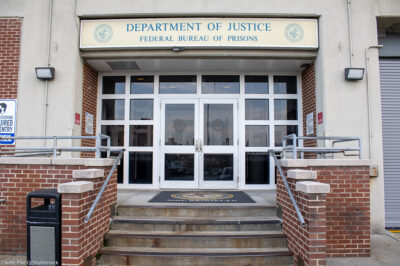This is a particularly busy week for criminal justice reform here in Washington, D.C. On Tuesday, House Judiciary Crime Subcommittee Chairman Bobby Scott (D-Va.) held a congressional summit, which explored cost-effective approaches to addressing crime that both increase public safety, as well as improve communities and lives.
Advocates, academic experts and law enforcement officials came together to present what we know to be the smartest, most effective ways to confront crime. The first panel looked at evidence-based prevention and intervention approaches to challenging gangs and youth violence, such as those that would be supported by legislation like the Youth PROMISE Act. As the ACLU recently wrote in a letter to Members of Congress urging support for the Youth PROMISE Act:
Instead of funneling more young people into the juvenile and adult criminal justice systems at great cost, H.R. 1064 proactively focuses on prevention practices that will not only address the underlying root causes of youth violence and gang activity, but also yield impressive cost-savings in the amount of federal and state money spent on incarceration.
The second panel focused on sentencing and alternatives to the tried and failed approaches of mandatory minimums and “three strikes and you’re out” laws. In this age of record budget shortfalls, we must ask ourselves if it really makes sense from an economic perspective to lock a first-time, nonviolent drug offender in prison for decades. Are we really safer as a result of such actions?
The final panel explored issues surrounding reentry and the collateral consequences of a criminal conviction. One of the most shameful collateral consequences that the ACLU has been at the forefront in challenging is the practice of denying the vote to more than five million convicted felons across this country. To continue with my rhetorical questions, how can we expect people to successfully reintegrate as members of society when they are denied the most fundamental right of citizenship?
Two great new reports have also been published this week, which will no doubt aid the efforts of those seeking to reform the criminal justice system. The first — One in 31: The Long Reach of American Corrections — by the Pew Center on the States revealed the shocking statistic that one in every 31 adults, 7.3 million Americans, is in prison, on parole or probation at a staggering cost to the states of $47 billion in the year 2008 alone!
The second report — Decades of Disparity: Drug Arrests and Race in the United States — by Human Rights Watch provided some haunting numbers from America’s decades-long “War on Drugs.” The report found that adult African Americans were arrested on drug charges at rates that were 2.8 to 5.5 times as high as those of white adults in every year from 1980 through 2007, the last year for which complete data were available. About one in three of the more than 25.4 million adult drug arrestees during that period was African American. It is important to note that blacks and whites engage in drug offenses — both possession and sales — at roughly comparable rates. Rather, these figures reflect who is being targeted in the drug war. As sobering as these numbers are, the figure in the report that immediately caught my attention was that from the years 1999-2007, 80 percent or more of all drug arrests were for possession. The question begs asking once more, is this really the best use of our resources?
Stay tuned on Thursday, as Father Greg Boyle, the founder of Los Angeles-based Homeboy Industries, will be in town for a briefing with Members of Congress on what approaches really work in reaching gang-involved and at-risk youth. Hint, hint: “nothing stops a bullet like a job.”


